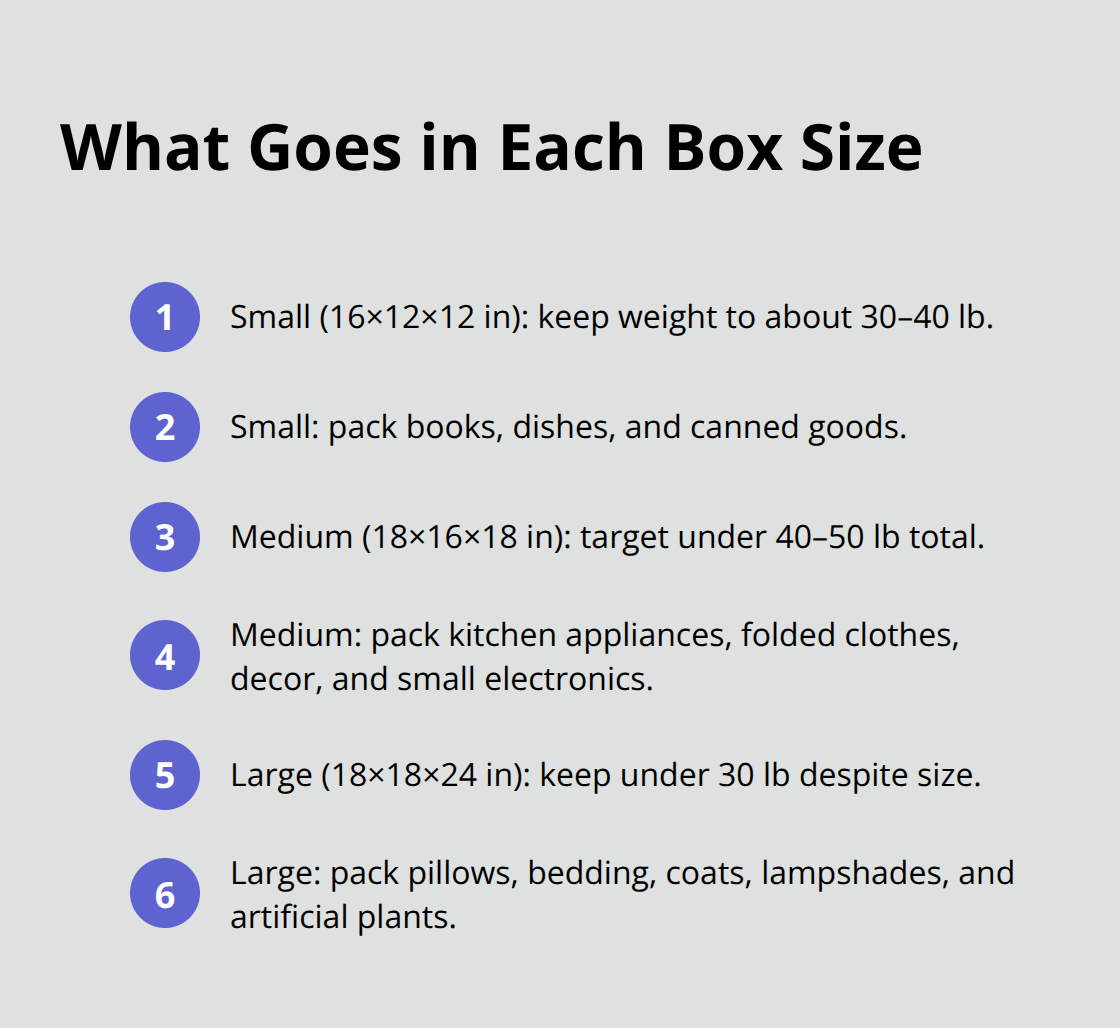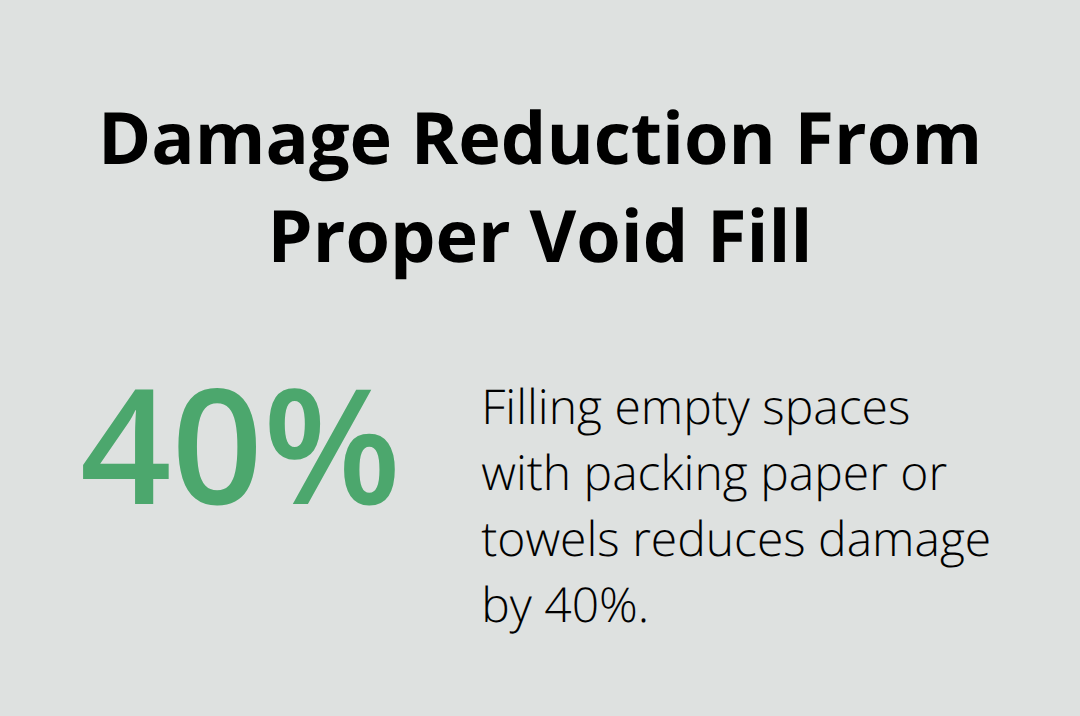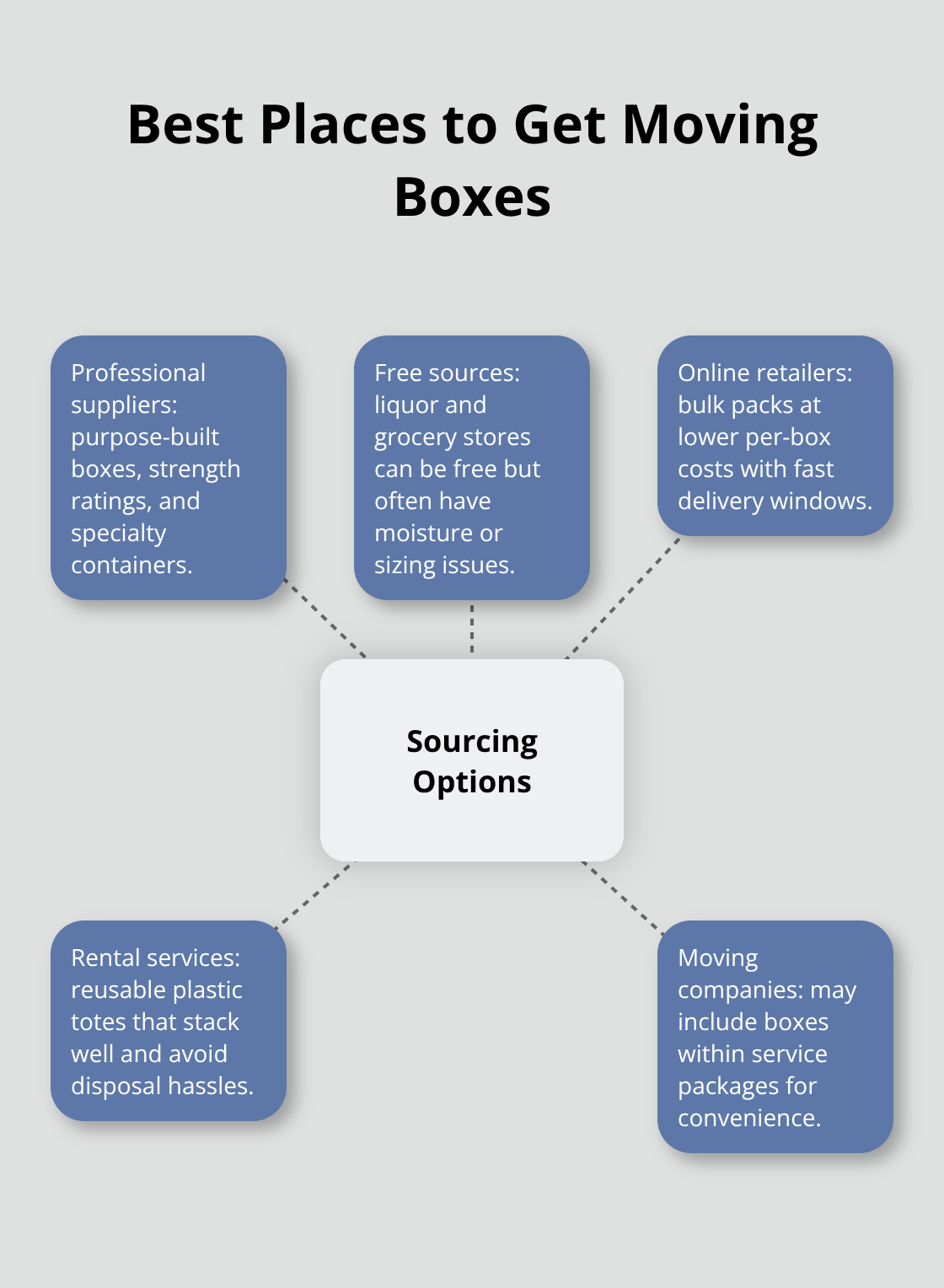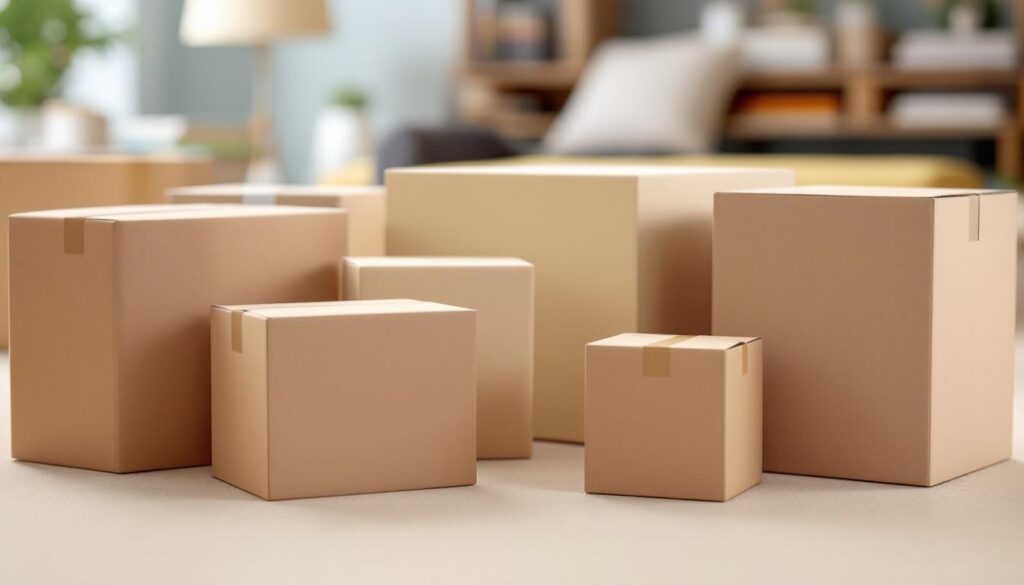Selecting the wrong moving house boxes can turn your relocation into a nightmare of damaged belongings and wasted money. Most people grab whatever boxes they find, leading to collapsed containers and broken items.
We at Southbay Moving Systems see this mistake repeatedly during moves. The right box selection strategy saves both time and stress during your transition.
Which Box Size Works Best for Each Item Type
Small Boxes Handle Dense Items
Small boxes measuring 16 x 12 x 12 inches serve one primary purpose: they contain heavy items without creating lift hazards. Books, dishes, and canned goods belong exclusively in these containers. Workers may be exposed to ergonomic risk factors in the workplace, such as lifting heavy items, which creates safety concerns during moves. Small boxes naturally limit weight to 30-40 pounds when you pack them properly.
Pack books spine-down in small boxes to prevent shifts during transport. Dishes require vertical placement with padding between each piece. Never use small boxes for clothes or lightweight items as this wastes space and increases your total box count.

Medium Boxes Balance Weight and Capacity
Medium boxes at 18 x 16 x 18 inches handle the majority of household items effectively. Kitchen appliances like blenders and toasters fit perfectly while they maintain manageable weight. Folded clothes fill medium boxes efficiently without they exceed weight limits.
These boxes work best for items that weigh 2-8 pounds individually. Office supplies, decorative items, and small electronics belong in medium containers. The 3 cubic foot capacity accommodates awkward shapes while it prevents the overpack that destroys box integrity.
Large Boxes Maximize Volume for Light Items
Large boxes at 18 x 18 x 24 inches exist for one reason: they transport bulky lightweight items. Pillows, comforters, and winter coats fill these containers without they approach dangerous weights. Lampshades and artificial plants also utilize this space effectively.
The 4.5 cubic foot capacity handles items under 2 pounds each. Heavy items in large boxes create lift hazards and box failure during transport. Box strength becomes your next consideration when you select the right containers for your move.
Key Factors When Selecting Moving Boxes
Box Construction Determines Moving Success
Double-walled cardboard boxes handle 65 pounds safely while single-walled containers fail at 40 pounds. Professional-grade boxes use 32 ECT (Edge Crush Test) rating or higher, which means they withstand 32 pounds of pressure per square inch before they crush.
New boxes cost $2-4 each but provide maximum protection for your belongings. Used boxes from grocery stores often have hidden damage from moisture and previous loads, which leads to collapse during transport. Grocery store boxes lack the structural integrity that household moves require.
Weight Capacity Prevents Structural Failure
Each box type has specific weight limits that you must respect for safe transport. Small boxes handle 30-40 pounds maximum, while medium boxes accommodate 40-50 pounds safely. Large boxes should never exceed 30 pounds despite their size, as excessive weight causes bottom failure and creates lift hazards.
The Federal Trade Commission recommends that you keep box weights under 50 pounds for safe handling. Professional movers face injury risks when boxes exceed these limits. Box manufacturers design weight capacities based on cardboard strength and handle placement (which affects lift mechanics).
Size Matching Prevents Packing Disasters
Overpacked boxes create lift hazards and increase injury risk during moves. Medium boxes filled with books weigh 70-80 pounds, which makes them dangerous for movers and damages box structure. Heavy items belong in small containers regardless of available space in larger boxes.
Underpacked large boxes waste space and allow items to shift during transport. A properly packed large box should feel firm when you shake it gently. Fill empty spaces with packing paper or towels to prevent movement. This technique reduces damage by 40% according to moving industry statistics.

Cost Analysis Reveals Best Value Options
Box rental services like FrogBox charge $3-5 per box monthly but eliminate disposal costs and storage problems. These plastic containers stack efficiently and resist moisture damage completely. Purchase costs for an average three-bedroom move reach $150-200 for new boxes, while rental options cost $80-120 for the same quantity.
Professional moving companies often include box costs in their service packages, which makes rental the most economical choice. The environmental impact also favors rentals since plastic boxes get reused 50-100 times versus cardboard’s single use. Your next decision involves where to source these quality containers for your move.
Where to Source Quality Moving Boxes
Professional Supply Companies Deliver Superior Quality
Professional moving supply companies like U-Haul and Home Depot stock boxes specifically designed for household moves. These retailers carry 32 ECT rated containers that withstand the rigors of professional transport. U-Haul’s small boxes cost $2.95 each while medium boxes run $3.95, but these prices include the strength tests that grocery store boxes lack.
Professional suppliers also stock specialty containers like wardrobe boxes with metal bars and dish barrel boxes with extra cushion. The investment pays off through reduced damage rates and easier stack patterns in trucks.

Free Sources Create Hidden Costs
Liquor stores provide sturdy boxes because alcohol shipments require durable containers, but these boxes come in irregular sizes that waste truck space. Grocery stores offer free produce boxes, yet these containers often contain moisture damage and pesticide residue that transfers to your possessions.
Moving statistics show that container failure during transport remains a concern for those using free boxes. Restaurant supply boxes work better than grocery options since they handle heavier food products, but you must inspect each box for grease stains and structural damage.
Online Retailers Offer Bulk Savings
Online retailers like Amazon and Walmart sell bulk box packages at $1.50-2.00 per box when you order 25 or more containers. These bulk purchases reduce per-unit costs while they maintain quality standards that protect your possessions throughout the move.
Bulk orders arrive within 3-5 business days, which gives you time to plan your pack schedule. Many online suppliers offer mixed-size packages (combining small, medium, and large boxes) that match typical household needs better than single-size orders.
Final Thoughts
Smart moving house boxes selection prevents 40% of transport damage while it reduces injury risks for movers. Small boxes for heavy items, medium containers for balanced loads, and large boxes for lightweight bulky items form the foundation of successful pack strategy. Professional-grade boxes with 32 ECT ratings cost more upfront but save money through reduced breakage and replacement costs.
Weight limits matter more than box size when you protect your belongings and maintain safe lift practices. We at Southbay Moving Systems have witnessed countless moves where proper box selection made the difference between smooth relocations and costly disasters. Quality containers protect investments better than free alternatives (which often fail during transport).
Professional movers eliminate guesswork from box selection entirely. Southbay Moving Systems provides expert pack services with appropriate containers for each item type, backed by transparent prices and positive reviews. Licensed professionals understand weight distribution, stack patterns, and protection methods that amateur packers often miss.




